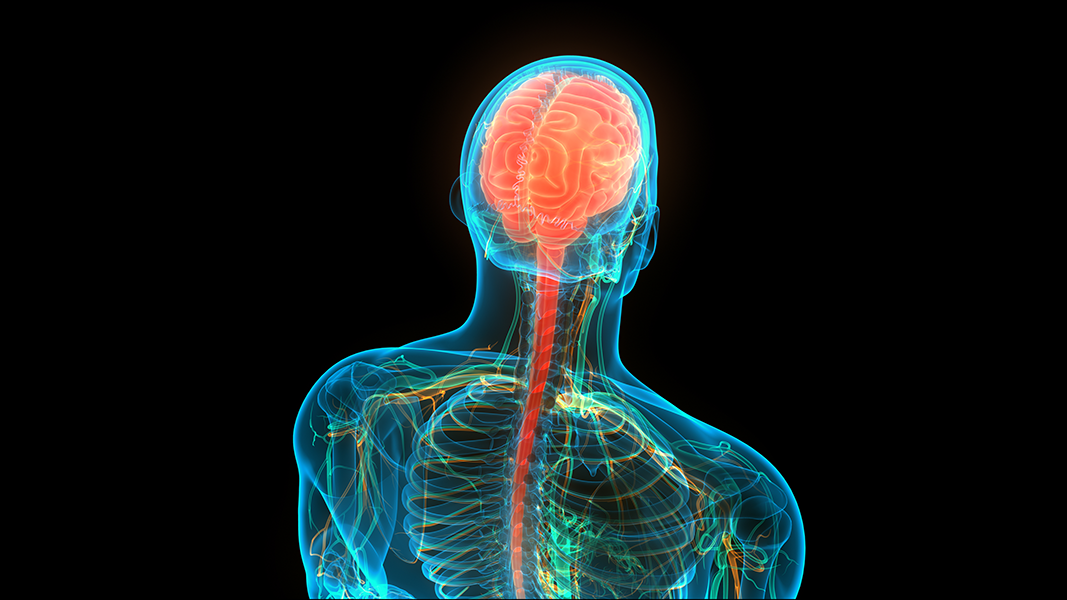
In the first part of this series, we reviewed recent research into the role of the CB2 cannabinoid receptor in cancer proliferation. This week we turn our attention to another fascinating aspect of CB2 function: its impact on psychiatric and mood disorders despite not being concentrated in the central nervous system (CNS).
After all, the CNS is the domain of its sibling, the CB1 cannabinoid receptor – the primary target of THC and the mediator of cannabis’ intoxicating effects. CB2, by contrast, is more prominently expressed in the peripheral nervous system, where it regulates inflammation, pain, and neuroprotection. CB2 is found to a much lesser extent in the brain, where it modulates dopamine signaling, neuroinflammation, and neurogenesis.
The CB2 receptor was of particular interest to visionary cannabinoid scientist Raphael Mechoulam. In the year prior to his recent passing at age 92, Mechoulam was still actively involved in research investigating CB2 in a variety of disease models. Here we look at a couple of his final papers on CB2 and mental health, as well as two related reviews published in the same timeframe.
CB2 & Schizophrenia
First comes a paper on CB2’s role in schizophrenia, a condition related to psychosis whose symptoms include hallucinations, delusions, disorganized thinking, social withdrawal, decreased emotional expression, and apathy. Coauthored by Brazilian scientists affiliated with the University of São Paulo, it appeared in the journal Progress in Neuro-Psychopharmacology & Biological Psychiatry1 in July 2022.
“The CB2 receptor modulates dopaminergic neurotransmission, which is abnormally enhanced in schizophrenia patients,” the authors explain. That much is clear. Given this, they wanted to know, how might “HU-910,” a synthetic research compound that selectively activates the CB2 receptor, affect behavior in a rodent model of the disease?
Through a series of tests, they found that HU-910 administration did indeed produce an anti-psychotic-like effect through the CB2 receptor. The authors suggest that these results “support further research on the potential therapeutic properties of this compound to treat schizophrenia.”
But their conclusion that HU-910 could serve as a drug warrants some caution. Cannabinoid receptors don’t function simply as on/off switches. As Project CBD has addressed in the past relative to proposed therapies for bone disease, Alzheimer’s Disease, and autoimmune dysfunction, selective CB2 agonists thus far have been disappointing in the clinical context due to unintended consequences and other unwelcome outcomes resulting from the receptor’s wide reach in the body.
CB2 & Depression
The very last paper bearing Mechoulam’s name before his death – among a body of work encompassing 379 total articles listed at Pubmed – concerns the role of the CB2 receptor in mediating the antidepressive effect of cannabidiolic acid-methyl ester (CBDA–ME). Titled “Cannabinoid Receptor 2 Blockade Prevents Anti-Depressive-like Effect of Cannabidiol Acid Methyl Ester in Female WKY Rats,” it appeared in the February 2023 special issue of the International Journal of Molecular Sciences,2 which explored the biological mechanisms of cannabinoids in mental health.
CBDA–ME is a stable synthetic analogue of cannabidiolic acid (CBDA), the raw, unheated version of CBD present in cannabis flower. (The fact that CBDA becomes CBD in the presence of sunlight or heat makes it difficult to study, hence the need for a more stable CBDA-related compound.) First described in 19693 by Mechoulam and a coauthor, CBDA–ME has in recent years been shown to exert anxiolytic,4 anti-hyperalgesic,5 and anti-depressive6 effects in male rodents at low doses.
The Israel-based authors assessed the antidepressant effect of CBDA–ME in mice through a common laboratory model known as the “forced swim test.” Among the authors’ findings, one stands out (and makes its way into the paper’s title): a synthetic CB2 antagonist called “AM-630” blocked CBDA–ME’s anti-depressive effect in female rats, but not in males, indicating that the CB2 receptor is involved in mediating the compound’s effect.
Does this suggest that CB2 activation – perhaps indirectly triggered by CBD or CBDA as well as CBDA–ME – could help fight depression, at least in women? Possibly, the authors conclude, but “the cumulative data indicate that these pathways are still ambiguous and require future research in order to fully understand the mechanisms of action of acute CBDA–ME in relieving the symptoms of depression.”
Targeting CB2 in CNS Disorders
Two other reviews from 2022 provide a broader perspective on CB2’s role in several emotional, cognitive, and psychiatric disorders – from addiction and anxiety to Huntington’s and Parkinson’s diseases.
A report published in the International Journal of Molecular Sciences, coauthored by Emmanuel Onaivi at William Patterson University in New Jersey and a team of Japanese scientists, concludes that CB2 receptors “are highly expressed in neuropsychiatric and neurodegenerative disorders, and that selective CB2 ligands have promising effects on the symptomatic management of these disorders.”
However, given the potential for such drugs to have significant side effects, the authors also recommend further study of cannabis-derived compounds to target CB2 in tandem with CB1, as well as less directly through the broader endocannabinoid system.
Next, an April 2022 review in Frontiers in Psychiatry7 notes that recent findings of CB2’s presence in several brain areas and different brain cell types, including neurons and glia, indicate that “CB2 may closely relate the immune system and the brain circuits regulating inflammation, mood, and cognitive functions.” This receptor is particularly implicated in neuropsychiatric diseases associated with neuroinflammation, according to the European scientists, who conclude that future research should continue to zero in on the critical link between CB2, inflammation, and psychiatric disorders.
This is part 2 of a 2-part series. See part 1 here.
Nate Seltenrich, an independent science journalist based in the San Francisco Bay Area, covers a wide range of subjects including environmental health, neuroscience, and pharmacology. Copyright, Project CBD. May not be reprinted without permission.
Footnotes
- Cortez, Isadora Lopes et al. “HU-910, a CB2 receptor agonist, reverses behavioral changes in pharmacological rodent models for schizophrenia.” Progress in neuro-psychopharmacology & biological psychiatry vol. 117 (2022): 110553. doi:10.1016/j.pnpbp.2022.110553
- Hen-Shoval, Danielle et al. “Cannabinoid Receptor 2 Blockade Prevents Anti-Depressive-like Effect of Cannabidiol Acid Methyl Ester in Female WKY Rats.” International journal of molecular sciences vol. 24,4 3828. 14 Feb. 2023, doi:10.3390/ijms24043828
- Mechoulam, R et al. “Carboxylation of resorcinols with methylmagnesium carbonate. Synthesis of cannabinoid acids.” Journal of the chemical society D: chemical communications vol. 1,7 (1969): 343-344. doi:10.1039/C29690000343
- Pertwee, Roger G et al. “Cannabidiolic acid methyl ester, a stable synthetic analogue of cannabidiolic acid, can produce 5-HT1A receptor-mediated suppression of nausea and anxiety in rats.” British journal of pharmacology vol. 175,1 (2018): 100-112. doi:10.1111/bph.14073
- Zhu, Yong Fang et al. “An evaluation of the anti-hyperalgesic effects of cannabidiolic acid-methyl ester in a preclinical model of peripheral neuropathic pain.” British journal of pharmacology vol. 177,12 (2020): 2712-2725. doi:10.1111/bph.14997
- Hen-Shoval, D et al. “Acute oral cannabidiolic acid methyl ester reduces depression-like behavior in two genetic animal models of depression.” Behavioural brain research vol. 351 (2018): 1-3. doi:10.1016/j.bbr.2018.05.027
- Kibret, Berhanu Geresu et al. “New Insights and Potential Therapeutic Targeting of CB2 Cannabinoid Receptors in CNS Disorders.” International journal of molecular sciences vol. 23,2 975. 17 Jan. 2022, doi:10.3390/ijms23020975
- Morcuende, Alvaro et al. “Immunomodulatory Role of CB2 Receptors in Emotional and Cognitive Disorders.” Frontiers in psychiatry vol. 13 866052. 15 Apr. 2022, doi:10.3389/fpsyt.2022.866052






